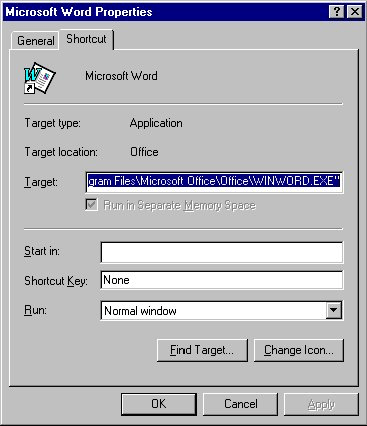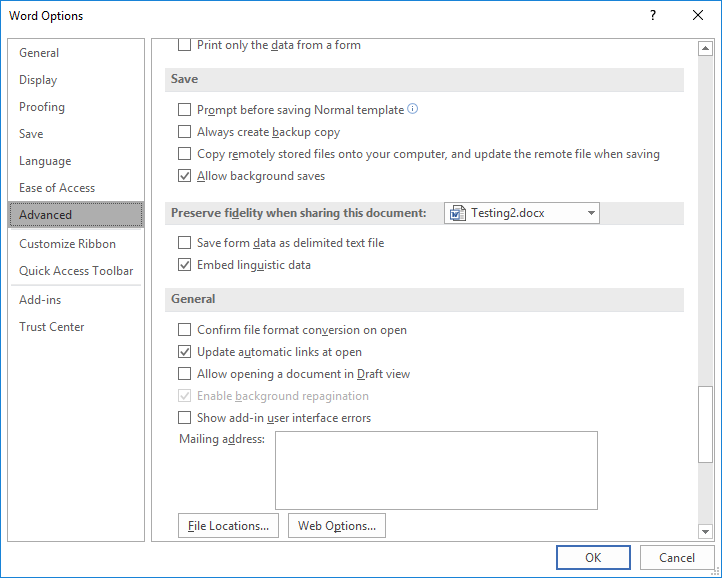
- Appsense microsoft word file location settings full#
- Appsense microsoft word file location settings software#
- Appsense microsoft word file location settings windows 7#
Some people leave as it is, some people replaces the Template username with %username% and some people delete all the Shell Folder keys. Within the search for the template user name and replace it with %username%, except for Shell Folders. – \Software\Microsoft\Windows\CurrentVersion\RunOnce – \Software\Microsoft\Windows\CurrentVersion\Run – \Software\Microsoft\CurrentVersion\Policies – \Software\Microsoft\SoftGrid\4.5\Client\UserInfo\DataDirectory Click OK.Ĭonsider whether you can empty / delete the following registry keys in your environment
Appsense microsoft word file location settings full#
Add Authenticated Users and give this group Full Control permissions. Remove the template user and the administrators group. Right click the Loaded Hive and select Permissions. Open the Registry Editor, select HKEY_LOCAL_MACHINE, open the File menu and select Load Hive.Įnter a key name, in this case I will give the key the name “robinhobo-com”. The next step is to load the NTUSER.DAT in the Registry Editor. I will use the backup copy to finish the Mandatory profile. As you can see in the picture below, all unnecessary shortcuts from the profile are automatically removed by this copy action. When you’re done with the customization of the profile, log out.įirst of all, I will make a local backup copy of the profile (under an administrator account). Now select both options again and click Apply. To clear the recently opened programs in the Start menu (as shown in the right image below), open the Taskbar and Start Menu Properties, open the Start Menu tab, unselect “Store and display recently opened programs in the Start menu” and “Store and display recently opened items in the Start menu and the taskbar” (as shown in the left image below), hit the Apply button. You can do this while customize the template user or afterwards by editing the library XML files (see step 5). I also remove all the public folders from the users Libraries. Mostly I customize the Pinned Items, the System Tray icons behaviour and some Start Menu properties. To keep the profile as clean as possible, customize only what is necessary. Login with the local user account created in step 3 and do the necessary customizations. Step 4 – Login with the Template account you just created The last registry hive has a lot of setting… and why should you’re creating an administrator account anyway?įor this guide I will create a Template user with the name “robinhobo-com”. Software\Microsoft\Windows\CurrentVersion\Internet Settings\Zones\1 (through 4) Software\Microsoft\Microsoft Management Console

If you do create a Local administrator account you get the following unnecessary settings within the profile
Appsense microsoft word file location settings windows 7#
On a Windows Server 2008 R2 (or Windows 7 client) create a Local non-administrative user account. To configure that users only can see the files and folders they have access rights to, enable Access Based Enumeration on the share. SYSTEM (This folder, subfolders and files)Īdministrators (This folder, subfolders and files) On a central file server, create and share a folder that you want to use for the folder redirections and apply the following share and NTFS permissions.ĬREATOR OWNER (Subfolders and files only) Step 2 – Create a Share for the Folder Redirections Make sure you set the following NTFS access permissions (including child objects)

To provide better security, always create the share on a NTFS volume.

On a central file server, create and share a folder that you want to use for the Mandatory profile. Step 1 – Create a share for the Mandatory profile There are quite a few ways to create a mandatory profile, with this blog I want to explain my way of creating a mandatory profile and what I think is the most efficient.īefore you begin, go to the Folder Options and make sure “Show hidden files, folders, and drives” is selected and that “Hide extensions for known file types” and “Hide protected operating system files (Recommended)” is deselected. Not surprising because with mandatory profiles in combination with user virtualization software, the user logon times are pretty reduced and there is less risk of profile corruption.

Appsense microsoft word file location settings software#
This is partly due the rise of user virtualizations software like AppSense, RES Software and Microsoft UE/V, which use a mandatory profile as a basis. Mandatory profiles are increasingly being used.


 0 kommentar(er)
0 kommentar(er)
